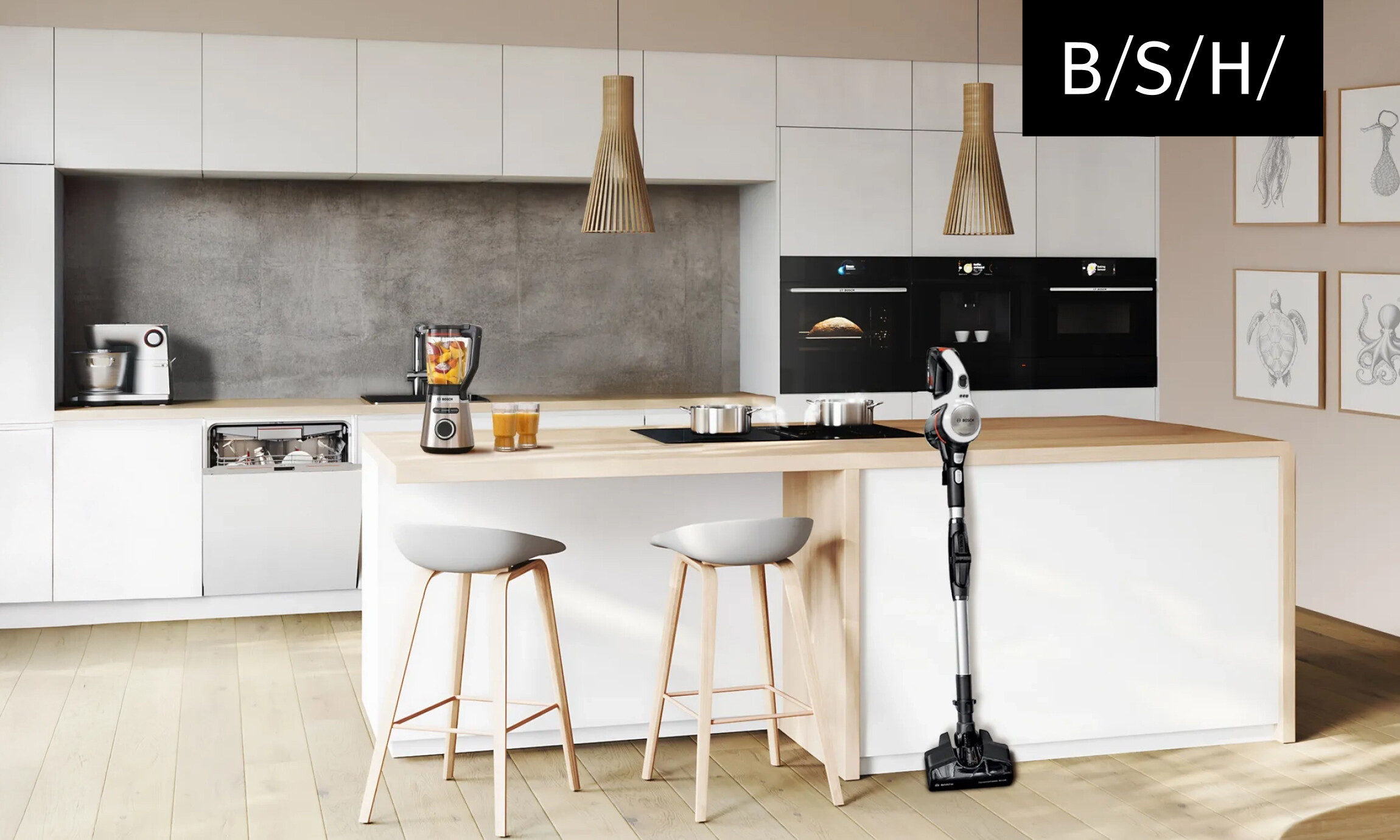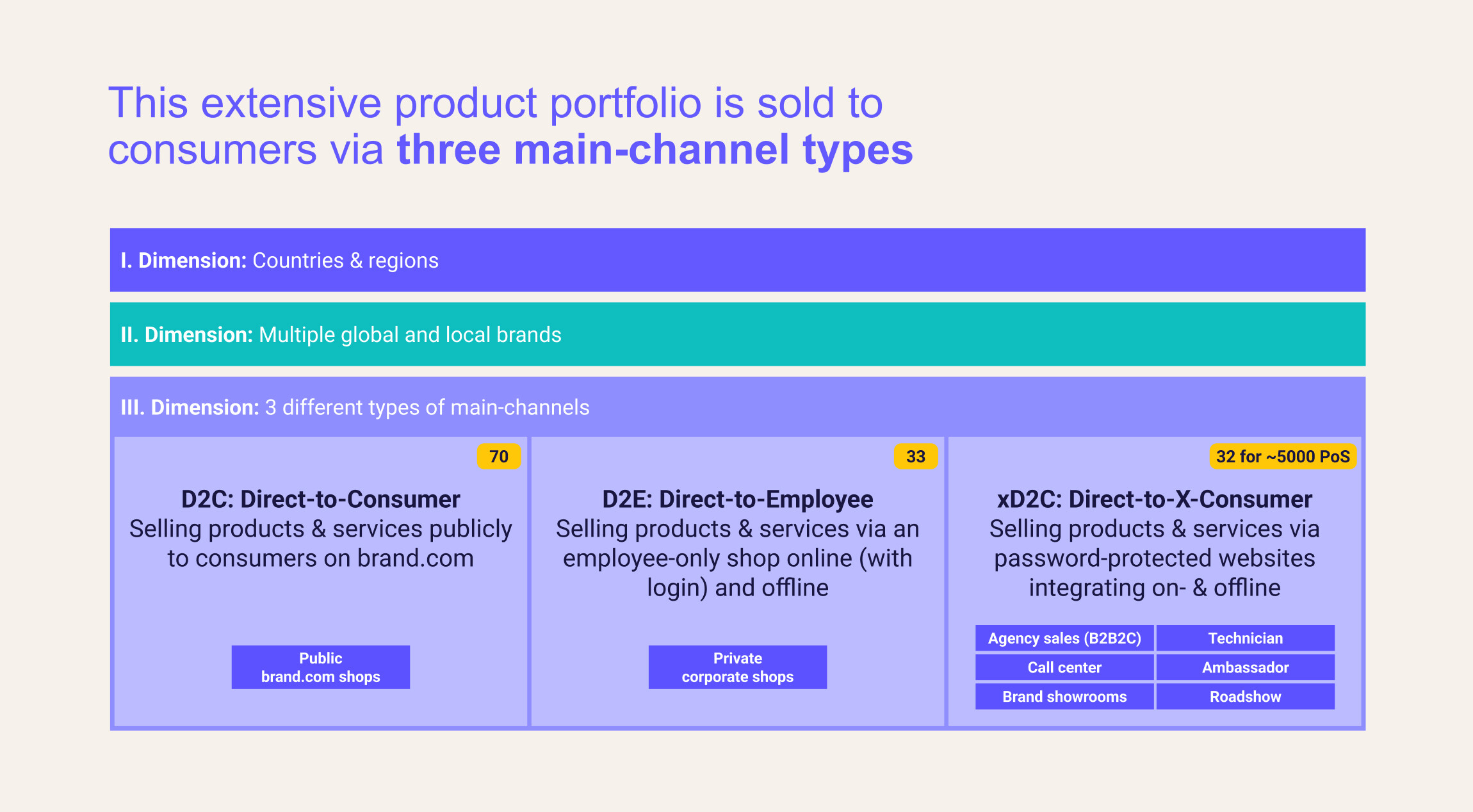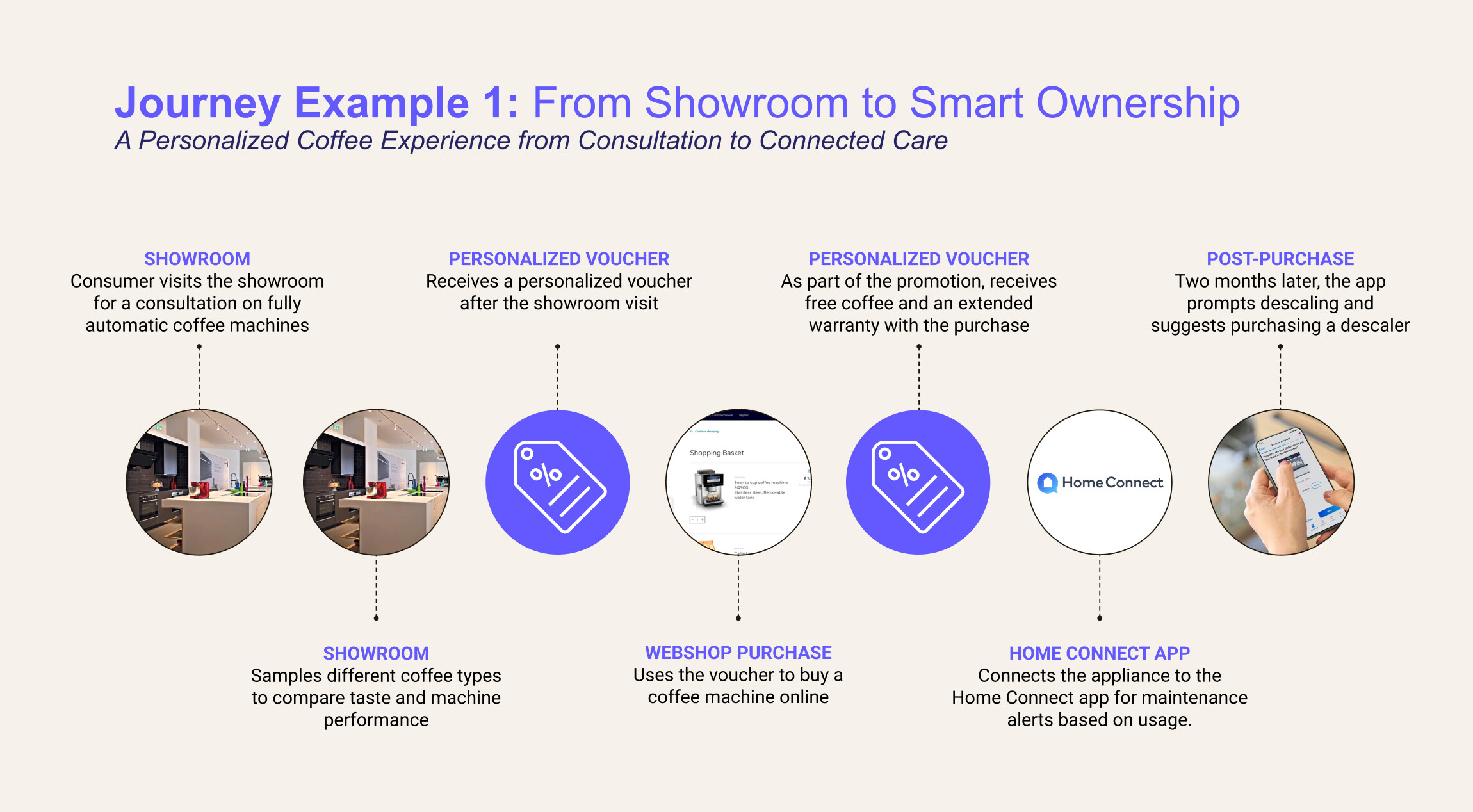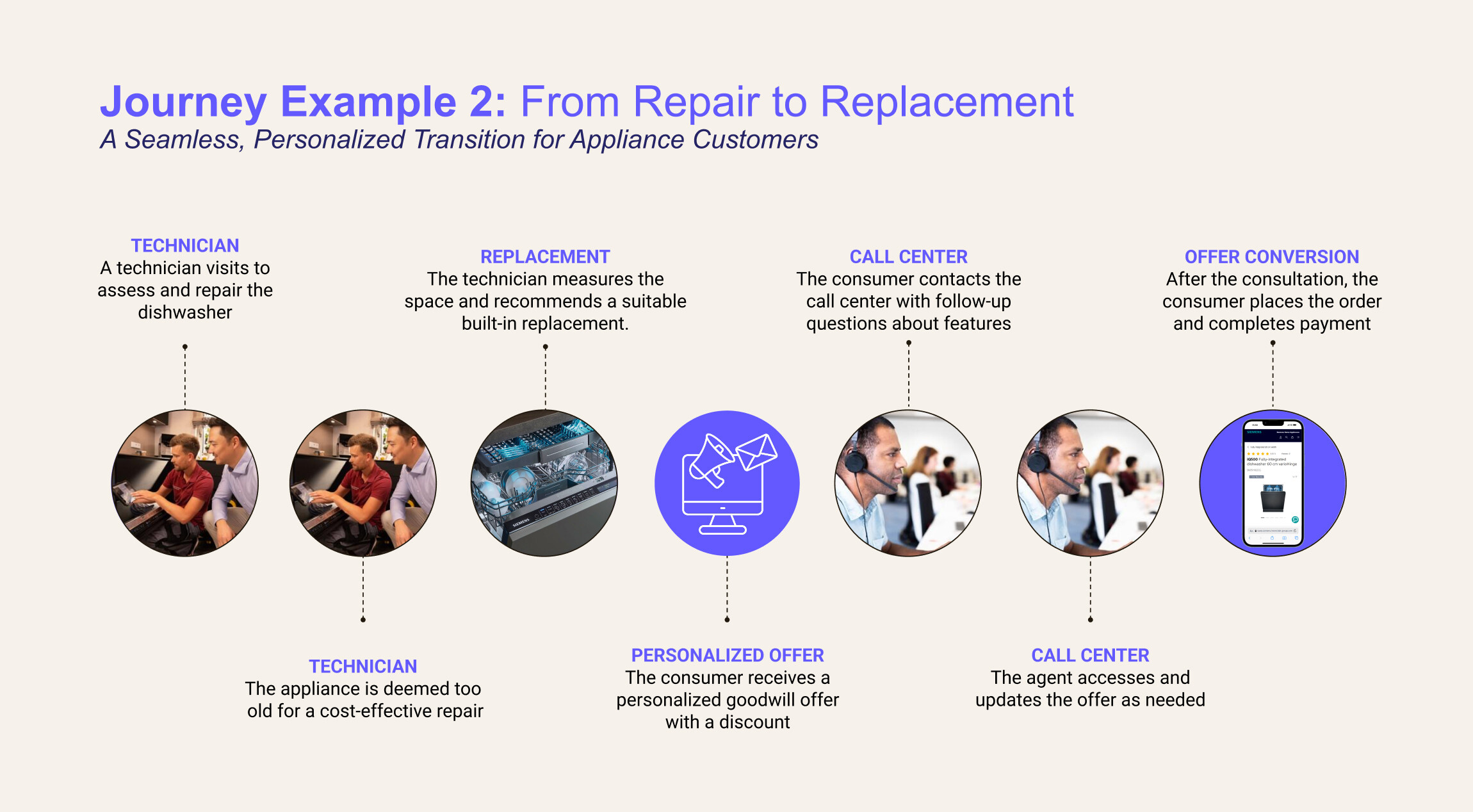
How can a world-leading home appliance manufacturer take advantage of a unified commerce approach spanning multiple channels, brands and countries? Learn from Martin Klockau, Head of Digital Service Management Solutions at BSH, how the home appliances division of the Bosch Group set the standard for enterprise-grade unified commerce — and won the “Team of the Year” Award at commercetools’ summit, Elevate 2025.

The catchphrase “We improve quality of life at home” is more than a promise. It’s what drives BSH to constantly find new ways to make the lives of our consumers more practical and simply better, all powered with smart technology. As one of the largest home appliance manufacturers worldwide, BSH provides consumers with the right home appliance for their individual needs to improve their quality of life. We’re proud to be the #1 brand in Europe, employ 57,000 people and run 39 production sites globally.
Offering products and services directly to consumers through eleven home appliance brands, including global household names such as Bosch, Siemens and Gaggenau, as well as regional favorites like Neff and Thermador, we offer an extensive product portfolio that encompasses coffee machines and vacuum cleaners. But our differentiator isn’t only the made-to-last products we produce — it’s increasingly about making the consumer front and center of our company.
For example, an innovation that makes the lives of our consumers easier is the Home Connect app, which allows them to control and automate their smart kitchen and home appliances.
Now, BSH has been a pioneer in digital services, empowering consumers to automate simple tasks with ease. However, we needed to broaden our scope, as our D2C (direct-to-consumer) business model has increased exponentially over the last years. More and more shoppers started to explore the wide range of products and services BSH has to offer, often bypassing major retailers. While this presented us with an enormous opportunity, the sheer size of BSH translated into a complex setup over time, across three dimensions:
Multiple regions and countries: We need to meet regional and local requirements, from specific payment providers to regulatory compliance.
Multiple brands: BSH encompasses eleven different brands. In a country, we usually have to serve multiple brand websites and stores. We currently have 33 websites to sell our own appliances to employees and associated companies. This can be BMW in Germany or Boeing in the US.
Multiple D2C sales channels: We sell products and services publicly to consumers on “brand.com” shops. We also provide employee-only online shops (with login) and private corporate shops. Plus, we offer a unique model called xD2C (direct-to-X-consumer), which allows us to sell products and services via password-protected websites, integrating online and offline channels (e.g., agency sales/B2B2C, call center, brand showrooms, technician-based sales).
For instance, we have branch showrooms across Europe, in Miami and our recently opened Experience and Design Center (EDC) in Washington D.C., with a range of premium and luxury home appliances. Additionally, we have significant amounts of technician-based sales. Say a technician comes to your home for an appliance repair and can advise and sell new products and accessories to clean and care for your appliance. Ambassador sales are also essential for smart kitchen machines. Last but not least, we also have a B2B2C business in Australia, covering many POS (points-of-sale) systems across the country.

In other words, the operational complexity of our D2C sales is massive. To handle this enterprise-level complexity, BSH needed a unified commerce platform capable of centralizing commerce logic to ensure real-time consistency in pricing, availability and promotions, streamlining our technology stack.
What’s more, we were also looking for a platform that would allow local markets to tailor the experience to their consumers, so we could create sophisticated journeys involving an array of touchpoints without friction.
Our vision: Customer journey scenarios we wanted to enable
More than streamlining the tech stack, our goal is to provide customers with experiences where boundaries are invisible. There are two scenarios that illustrate this vision:
Say you’re a coffee enthusiast visiting our showroom in Miami. You sample various coffee blends, test out machine performance and get expert advice, but you’re not ready to buy yet. After your visit, the sales agent gives you a personalized voucher. A week later, you decide it’s time to buy, so you visit the web store, redeem your voucher and receive a free coffee supply and extended service with your purchase.
A few days later, the coffee machine is delivered to your home. You start brewing right away and connect it to the Home Connect app for a personalized coffee experience. Two months in, the app sends a predictive maintenance alert reminding you to descale the machine to keep it running smoothly. With a tap, you can easily order the descaler, helping you enjoy great coffee while maintaining your machine with ease.

Imagine your dishwasher breaks down and you’re stuck washing dishes by hand. Frustrated, you call the service center or book a technician visit online. A day or two later, the technician arrives, inspects the appliance and discovers the motor is broken. Given the machine’s age is 12 years, repairing it may not be cost-effective. At this point, the technician becomes a trusted advisor, helping you explore suitable replacement options, especially since they already know your kitchen layout and installation requirements.
If you’re not ready to decide on the spot, the technician sends you a personalized offer with a goodwill discount, acknowledging that the repair couldn’t be completed. A couple of days later, you call the service center with questions about product features. The agent, with access to your data, updates your offer accordingly. Once you’re ready, you receive the revised offer and can place the order immediately. Your new dishwasher arrives a few days later, completing a smooth transition from repair to replacement.

That said, our vision has been primarily focused on providing consumers with a seamless, personalized shopping journey across all touchpoints, ensuring consistency in promotions and pricing in real time. Achieving this overarching goal requires our internal operations to run smoothly and efficiently. We need to simplify the technical side to reap the benefits of business value over time — everything is connected.
The challenges BSH faced with legacy commerce technology
The highly complex environment in which our D2C business operates involves multiple teams, departments and business areas — each with different goals and requirements. To succeed, we needed a flexible, future-proof platform that could support diverse global markets and provide consumers with a seamless, personalized experience.
The challenge with making this vision a reality is that BSH relied on a “one-size-fits-all” commerce solution that no longer met the need for flexibility and customization at such an enterprise scale. Unsatisfactory website performance and lack of mobile responsiveness negatively impacted consumer experiences. Data was siloed. Our previous eCommerce setup varied by country based on factors like market maturity, sales strategy and product selection, leading to different consumer experiences across brands and regions.
As our teams dealt with an aging on-premise solution, innovating quickly and constantly became increasingly compromised. Development and deployment were rigid and time-consuming processes for us to manage efficiently.
Finally, because each of these monolithic systems controlled everything — product catalog, pricing, promotions, localization and content delivery — adaptability became a persistent challenge. All together, this complexity slowed down digital transformation and limited our ability to scale efficiently.
Unifying commerce: The Sherpa initiative
To truly streamline our D2C sales, we recognized the need for a genuine unified commerce platform to:
Consolidate operations on a single system.
Deliver a 360-degree view of the consumer.
Connect data across all channels, brands and countries.
This vision led to the creation of Sherpa, our headless commerce platform built to meet these exact needs. At the heart of Sherpa is commercetools, a composable commerce solution that empowers us to deliver flexible, scalable and seamless digital shopping experiences. Its modular architecture lets us integrate best-in-class services, such as CMS, localization, payments and consumer data, in one unified platform, without the limitations of monolithic systems. The API-first approach allows channel/country/brand-specific frontends while keeping business logic centralized, ensuring real-time accuracy and scalability.
Sherpa provides benefits across our stakeholders:
For consumers: Enhanced performance, intuitive navigation and seamless shopping across brands, channels and countries.
For marketers: Greater autonomy to drive local D2C initiatives with less dependency on development/technical teams.
For developers: Increased agility, faster time-to-market and system resilience through decentralized services and reduced failure points. In turn, this enables a top-notch performance for our consumers.
commercetools empowers BSH’s unified commerce journey by providing a scalable, adaptable and innovative backbone. Its API-first, headless architecture supports multi-brand, multi-country and multi-channel setups, enabling tailored frontends while maintaining a unified core.
With a global-scale, composable infrastructure, BSH benefits from low-latency performance, flexible configurations and continuous innovation through frequent feature releases. The extensibility and integration capabilities, including an API extension framework and event-driven architecture, allow seamless data synchronization and real-time orchestration across ERPs, CRMs and other systems.
The microservices-based commerce model accelerates new touchpoint launches without disrupting existing operations. A centralized core ensures smooth cross-channel experiences, while plug-and-play integrations simplify connections with payment providers and logistics services. Overall, commercetools enables BSH to scale efficiently while adapting to dynamic market needs, helping us achieve the following results:
Key performance improvements:
Improved Google Lighthouse scores and faster site performance.
Enhanced UX through mobile-first design and compliance with accessibility standards.
Reduced order placement to SAP ERP from ~5 minutes to milliseconds.
Promotion API latency improved from 700ms to 150ms.
Operational efficiency gains:
Streamlined content and eCommerce management.
Faster and easier integration with tools like payment processors, CRMs and shipping services.
Import APIs support bulk data changes, such as yearly price updates.
Event-based architecture and extensibility enable rapid rollout of new features, channels and experiences.
As a result, we had a significant business impact:
+1.5% conversion rate in the first live shop (November 2024).
+7.2% GMV increase in Siemens Portugal (between November 2024 and January 2025 vs. the previous year).
Our implementation strategy
We launched our new unified commerce platform using commercetools as part of a broader D2C transformation at BSH. Backed by a cross-functional team of over 20 internal departments, 10+ business stakeholders and five external partners, we delivered a MACH®-based solution and launched our first regional shop within six months. This foundation will enable us to scale across multiple brands and European markets through 2025.
One of the biggest challenges was securing buy-in from stakeholders. We needed to convince both business leaders of the necessity of this substantial investment and the IT teams to commit to a new, collaborative way of working. Previously, teams could simply import their data and let the D2C teams handle the rest. With Sherpa, we modernized integrations with core systems like SAP ERP, and empowered internal teams (PIM, CRM, Customer Service) to own their data through dedicated APIs, ensuring accurate, real-time information and minimizing disruption.
A successful proof of concept in 2023 validated the integration of key channels, pricing models, payment providers and logistics before we began full implementation in early 2024.
We assembled a core project team to ensure smooth coordination across all stakeholders and to establish foundational concepts for enabling unified commerce across multiple brands, countries and channels. Key milestones included:
Our checkout team developed a new Next.js-based checkout application, seamlessly integrating with commercetools via GraphQL.
The API team extended existing services with custom BSH logic and connected commercetools to core source systems such as PIM, pricing and order entry.
Our BSH integration middleware team built new APIs for pricing, stock, order status and order entry, while working closely with the internal SAP ERP team to modernize order fulfillment processes.
A dedicated payment team integrated multiple payment providers and methods into the new platform.
Additional teams contributed by enabling order status visibility in consumer accounts, rendering promotions on product listing and detail pages, and supporting cart functionalities on legacy pages.
One of the project’s biggest challenges was managing dependencies and risks across all teams to maintain seamless collaboration and ensure a stable rollout. To manage complexity and accelerate delivery, we adopted a dual-track approach:
Development teams are structured around capabilities like checkout, payment and APIs, focusing on building a stable, configurable blueprint that was first tested in low-risk markets.
Rollout teams, co-located globally, work autonomously with local business units, handling configuration, training, KPIs and access management without touching code. They’re configuring the system with business users and working completely autonomously from the development teams.
During the project, an architect from the commercetools Expert Services team supported us in key architectural design decisions. This included the checkout and payment flow, as well as the base setup of commercetools to support unified commerce scenarios. This initiative, driven by shared ownership, agile practices and open communication, marked a major milestone in BSH’s journey to scalable, unified commerce.
What’s next for BSH’s unified commerce
Thanks to this transformation, BSH is now equipped to deliver personalized, seamless digital experiences worldwide. Our teams can quickly launch new features, enter new markets and continuously optimize the consumer journey free from the constraints of outdated technology.
Looking ahead, we have several major milestones on the horizon. In Q3 2025, we plan to launch our first employee sales store and begin piloting call center integration with commercetools in France. By the end of this year, we aim to roll out 70 brand websites across 28 countries, across North America, Europe, Africa and APAC. This includes adapting to local requirements like taxes and payment systems, making it a significant but exciting challenge.
Our biggest goal is to fully decommission our legacy tech stack by the end of next year, with all touchpoints — regions, brands and countries — fully migrated to commercetools. While we’re still early in the journey, this transformation has already empowered our teams, streamlined operations and positioned BSH to thrive in an evolving digital landscape.
Now we can say that our commerce, just like our products, improves quality of life.
